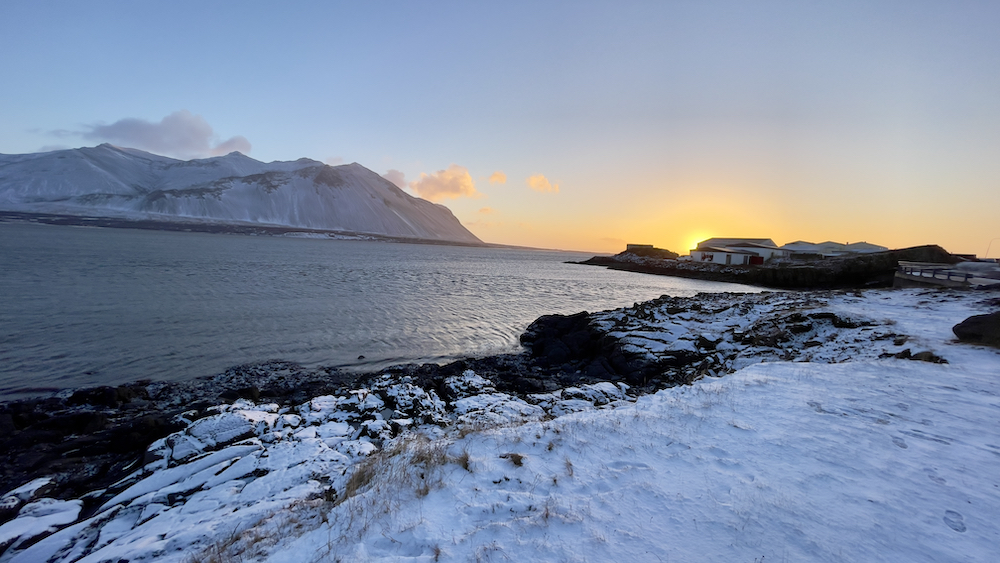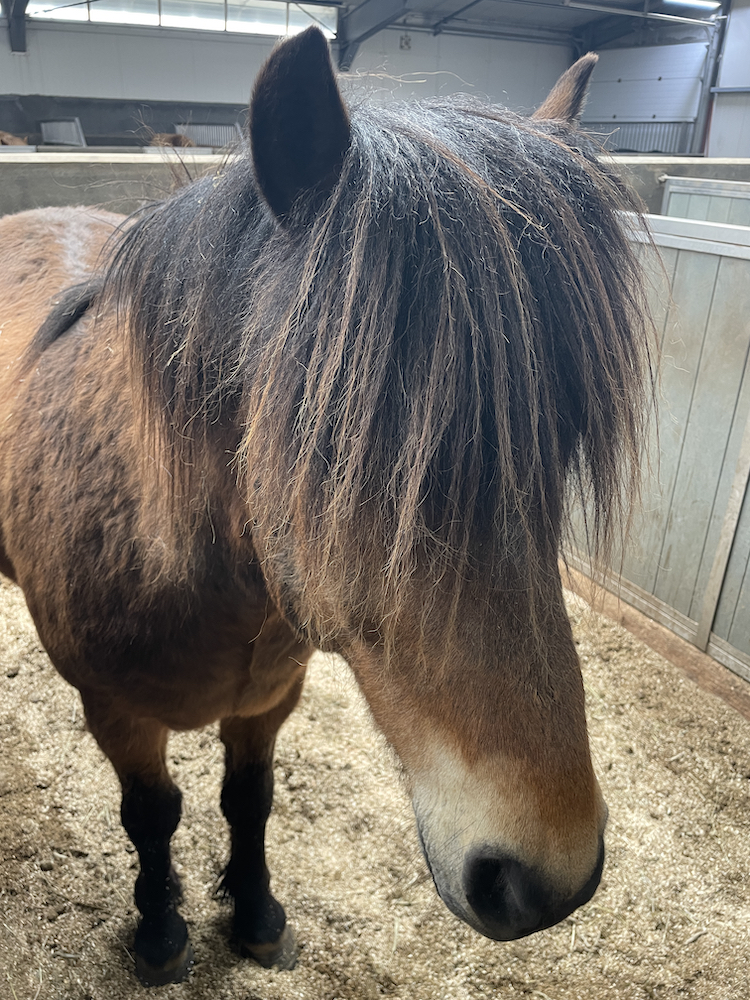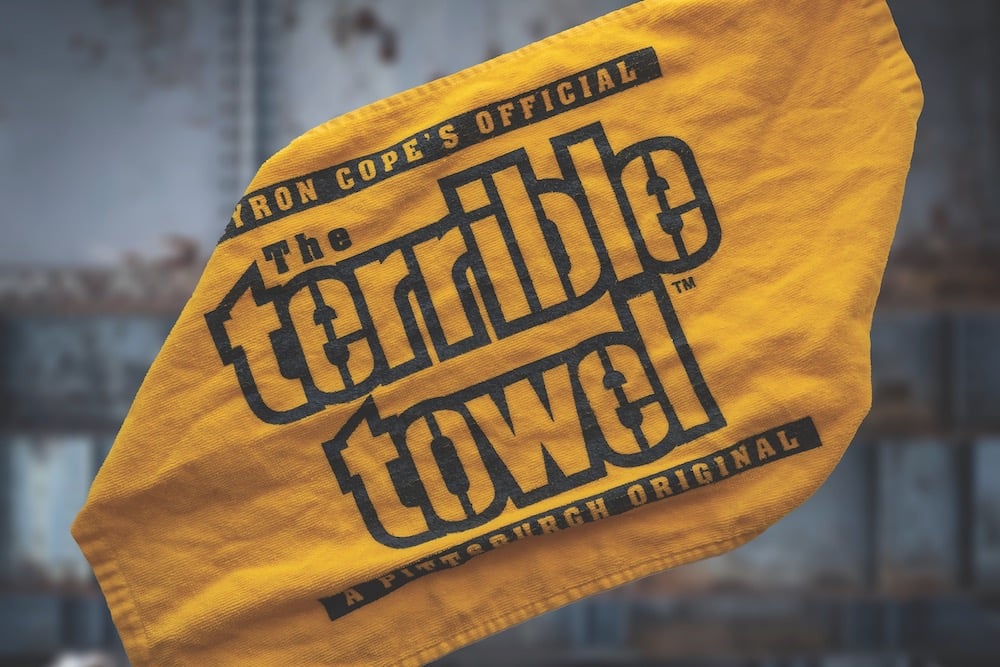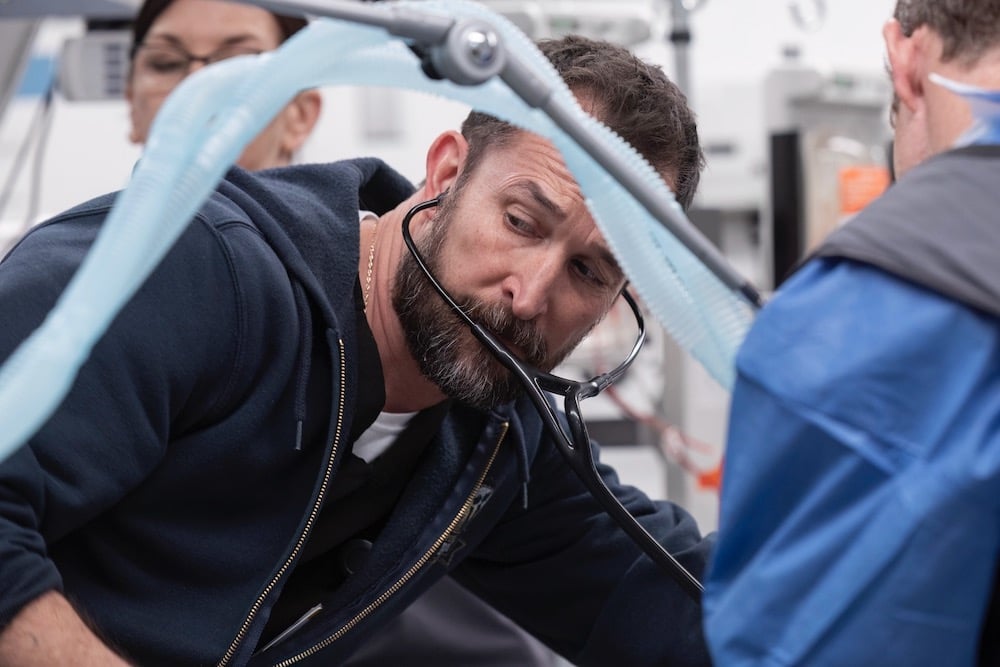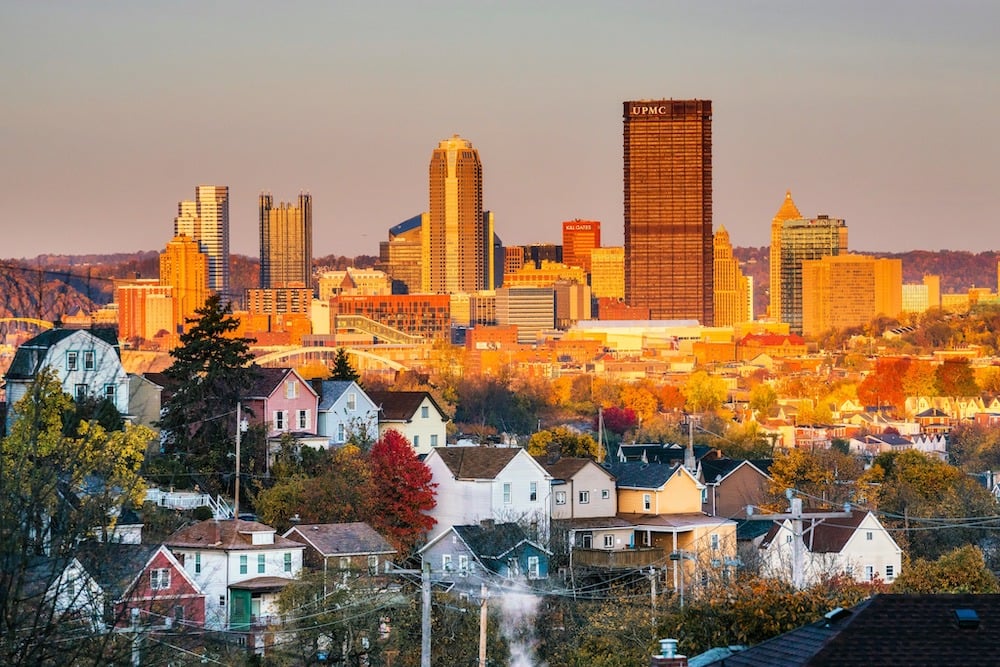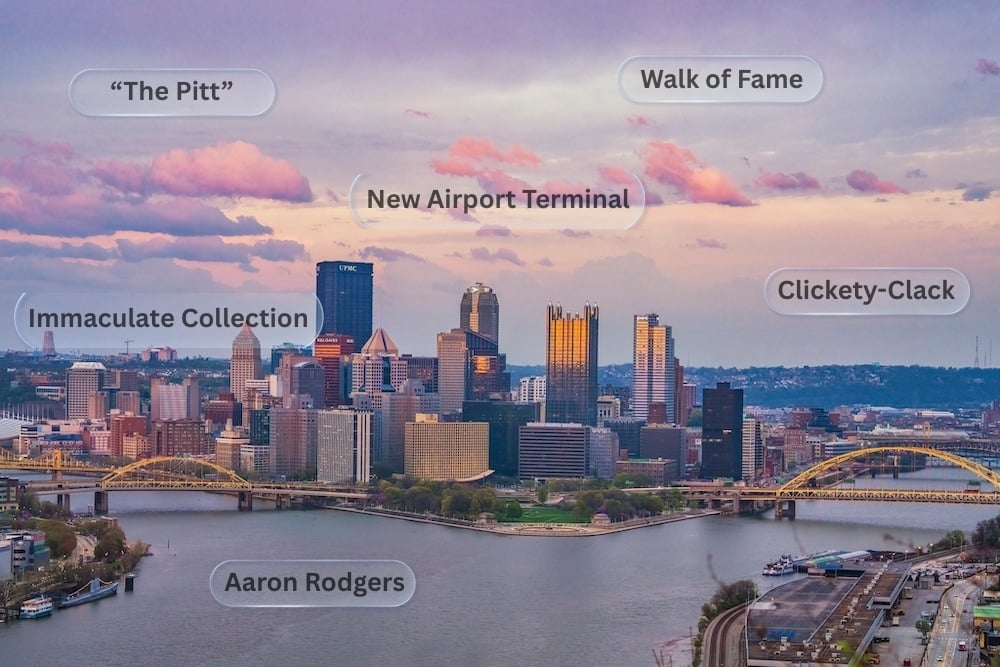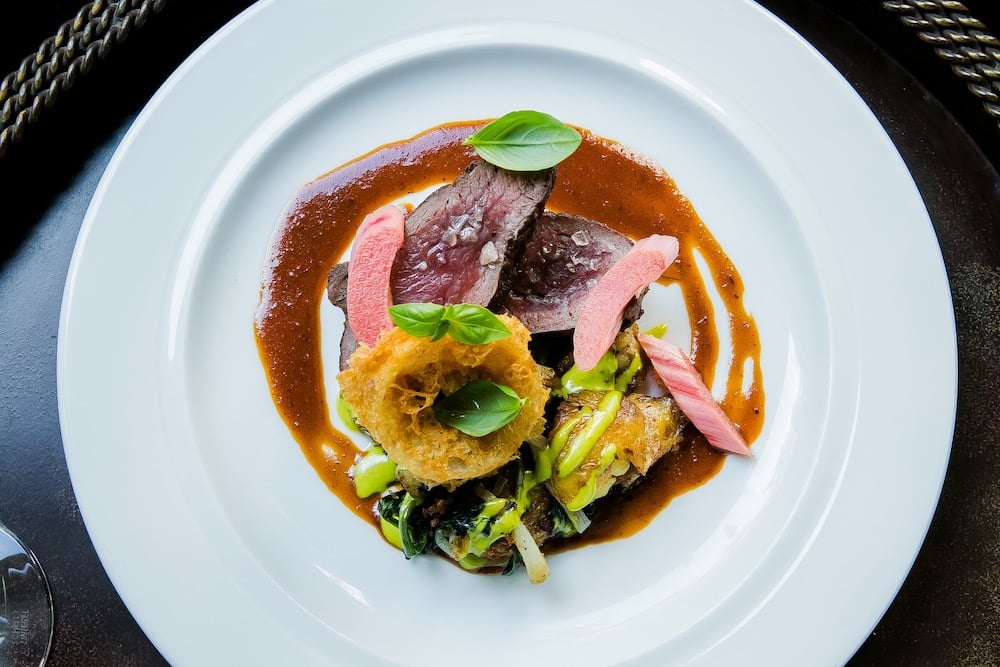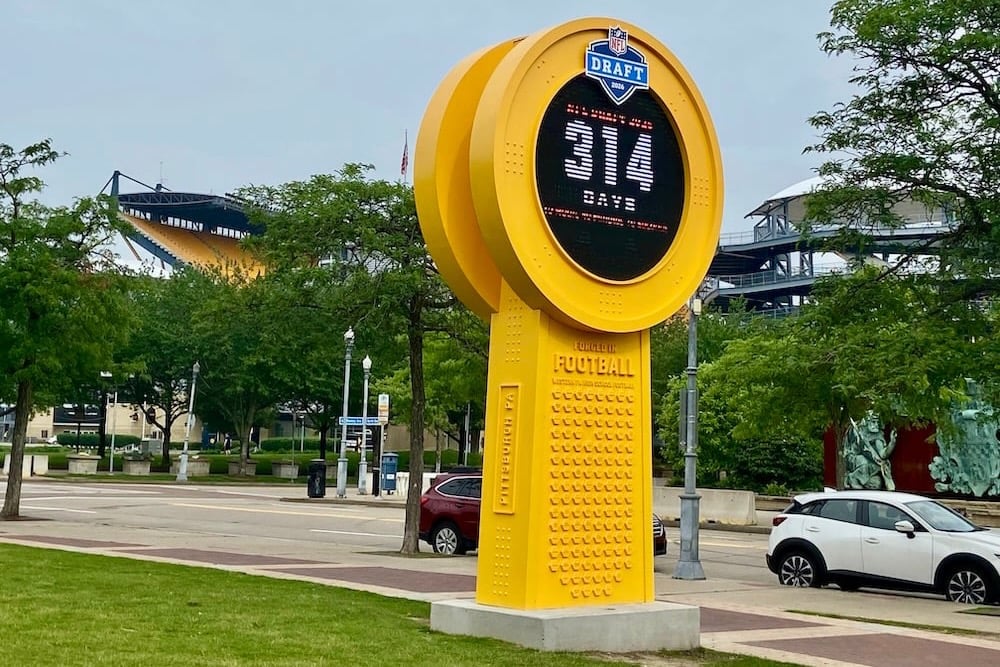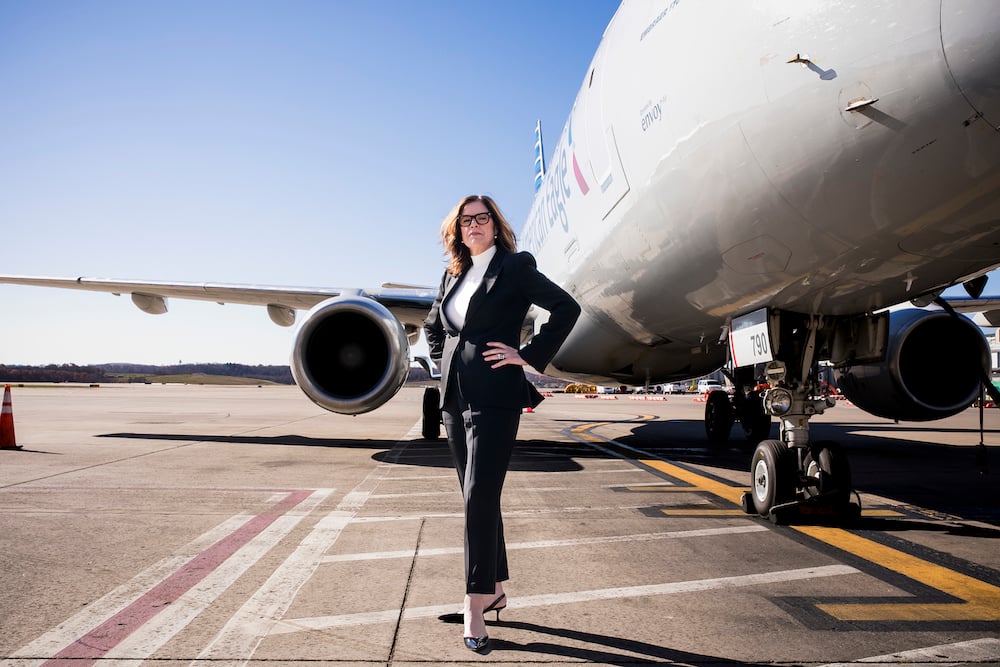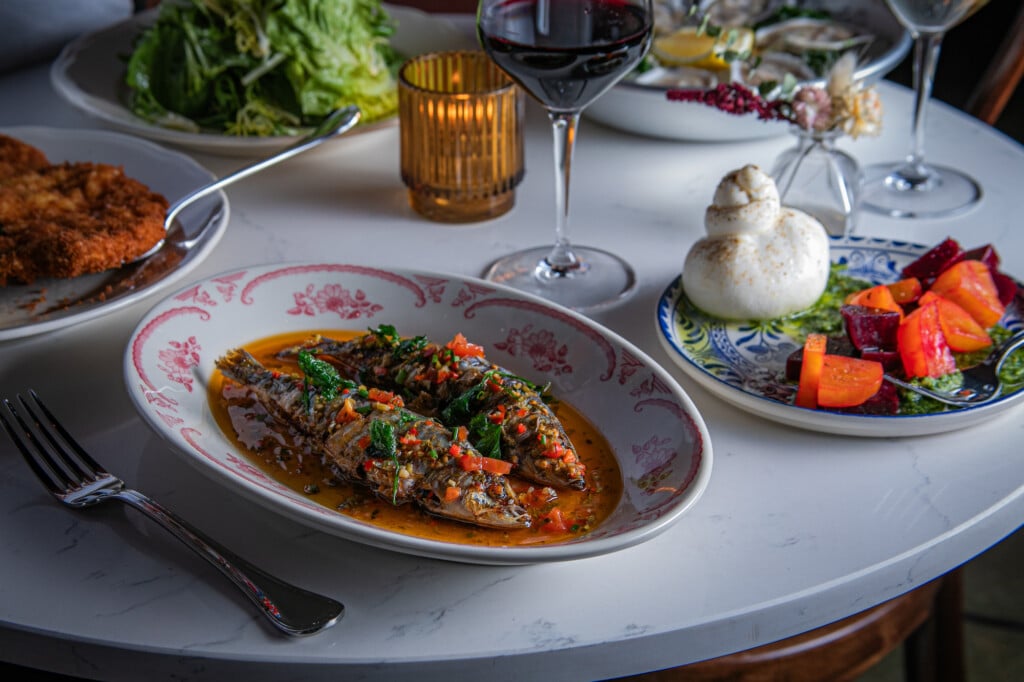I Flew Nonstop from Pittsburgh to Iceland. Here’s What I Learned About the Land of Fire and Ice
With new nonstop flights from Pittsburgh International Airport, Iceland is a hotspot for your next getaway. Jæja!
If you happen to see Þvörusleikir, Hurðaskellir, Bjúgnakrækir or Gluggagægir on a cold winter’s night, chances are good you’re in Iceland for the holidays.
These are just four of the 13 troll-like Yuletide-lads who play mischief on unsuspecting boys and girls, both nice and naughty, beginning on Dec. 12. Each Yuletide-lad is named after his favorite prank — such as Spoon Licker, Door Slammer, Sausage Swiper and Window Peeper, mentioned above. Children leave their shoes out on frosty window sills; nice tots receive small presents from the Yuletide-lads, while naughty tots wake up to find rotten potatoes. Even worse is Jólakötturinn, the Yule Cat — a vicious, ugly puss that eats bad children unless they’re wearing new clothing on Christmas Eve.
It’s all part of the fun in the Land of Fire and Ice, where you’ll forgive the occasional volcanic eruption in exchange for mile after mile of rugged, breathtaking beauty.
The Icelandic language is considered to be one of the most complex to learn, with four cases, irregular declensions, sub-classes for nouns and three voices. The good news is native English speakers already have a head start, as both Icelandic and English have Germanic roots and use the same alphabet (with minor differences). Because of the country’s isolation, Icelandic has changed little over the centuries; modern speakers can read sagas from over 1,000 years ago. Make the wonderfully versatile jæja your first lesson: it’s a hardworking filler word that can convey anything from “Well now” or “Ah, makes sense!” to “What’s up? or “Let’s go!” Pronounce it yEYE-yah and sprinkle it liberally. Take comfort that English is widely spoken, although in public spaces you’ll more often hear the lilting cadences of Icelandic.
Perched atop the volatile Mid-Atlantic Ridge (between the North American and Eurasian tectonic plates), Iceland is a literal hotspot for geological activity such as volcanoes, geysers and earthquakes. These geothermal and hydroelectric features have been harnessed to provide inexpensive hot water, heating and electricity to the country’s 380,000-plus residents.
You can experience these geothermal wonders for yourself at the many hot springs that dot the landscape. Blue Lagoon is the most popular, and for good reason. Step into the warm, milky blue water and you’ll swear you’re on another planet, surrounded by a field of black boulders bathed in waves of steam. With a swim-up bar, a steam cave and a therapeutic waterfall (you’ll swear you’ve been invigoratingly pummeled by a troll), it’s a blissful spot right after an overnight flight. The public pools can get quite crowded; if you’re looking to spend some money, book a night or two at the resort and enjoy the private waters, with endless bowls of age-defying white silica to tone your face.
For a different experience altogether, book a morning at the Hrammsvik Hot Springs. It’s a secluded spot across the bay from the stunning Thorir’s Hills and a truly magical place. It’s accessible but off the tourist-beaten paths, in a more verdant and pristine setting. You’ll spot wild ducks and the occasional seal hunting in the bay as you soak in one of the resort’s eight pools.
Your best bet is to make Reykjavik, the country’s largest city and capital, your home base. Rent a car and see everything from waterfalls and geysers to white-capped mountains and black-sand beaches within a two-hour drive. Head back to the city for high-end shopping and funky dining spots in the delightfully walkable downtown.
Shopping is a priority in downtown Reykjavik. Pick up local candies, jams, cookies, sauces and more at Taste of Iceland. The friendly staff will let you sample anything you’d like. Just a few steps away is Epal, featuring upscale, Scandinavian-inspired home decor designed by local crafters. Reading is a favorite pastime in Iceland, so you’ll find a bookstore or two on practically every street. Bokabud Mals og Menningar is a favorite, doubling as a bar with a popular house band.
You’ll never forgive yourself if you pass up a genuine lopapeysa — Iceland’s iconic wool sweater with an instantly recognizable geometric design. You’ll see every color and variation on the streets, worn by both men and women. The wool is known for its warmth, light weight and water resistance. (And they’re perfect for Pittsburgh winters, too.) The best spot to find one is the Handknitting Association of Iceland, a collective enterprise with two stores in Reykjavik. Wool is first sourced exclusively from Icelandic sheep; then, around 500 native knitters, working from home in a co-op model, handcraft the sweaters following traditional designs. When you see the price, remember that each sweater takes 8-10 days to knit. The result is a wearable piece of art you’ll keep forever.
Towering over Reykjavik is the imposing Hallgrímskirkja, designed by architect Guðjón Samúelsson (1887-1950). The Lutheran church’s size and radical design were controversial, and Samúelsson never saw its completion. It took 41 years (1945-86) to build. The central tower rises 245 feet over the city; an elevator takes visitors up eight stories, but you’ll have to climb stairs to the belfry, whose bells ring at every quarter hour. Mass is held in Icelandic on Sundays and Wednesdays, with an English service the last Sunday of each month.
From Reykjavik, the Golden Circle is a favorite day trip. In this area, you’ll find the Geysir and the Strokkur; the name geysir migrated into English as our geyser, although the original Geysir is now mostly inactive. The Strokkur’s spout is very reliable, erupting every 8-10 minutes. Next make your way to the majestic double Gullfoss waterfall, in the canyon of the Hvítá river. (You may recognize the site from the History Channel’s “Vikings.”) For a truly historical thrill, walk along the Þingvellir rift valley and visit the Alþing, where Iceland’s first parliament met in 930 AD. The two-week parliamentary assembly was attended by chieftains and farmers from all over Iceland to establish a common set of laws. Besides matters of law, merchants set up shop to sell goods and services such as tanning, ale-brewing and smithing. The annual Alþing was a crucial step in establishing a common cultural identity amongst the Icelandic people.
As you drive throughout the Golden Circle, look for pastures graced by the beautiful Icelandic horses. The breed is quite special — the Icelandic is the only horse with five natural gaits (most other breeds have only two or three). Small, gentle and intelligent, the Icelandic horse was brought from Norway by the Vikings hundreds of years ago. No other breed of horse is allowed in Iceland.
Find natural wonders on a micro scale at the charming Friðheimar greenhouse and restaurant, where piccolo and plum tomatoes are the stars. The scent of tomatoes strikes as soon as you enter the vast greenhouse, with vertical vines twisting and soaring far overheard. The place buzzes with bees (imported from Denmark for pollination) and happy diners, feasting on tomato-forward tortillas, pastas, soups, breads, desserts and even beers. Don’t miss the tomato ice cream, served in a clay flowerpot.
Still hungry? See the centuries-old method of baking rye bread over geothermal vents at Laugarvatn Fontana. The loaf is slow-baked in the ground at around 220 degrees for 24 hours. The bread is served warm with locally made butter and smoked salmon or trout.
Iceland boasts more than 260 museums, from the historical to the quirky, and most within an easy drive of Reykjavik. The Saga Museum resurrects the Vikings with life-size silicone figures in historically accurate clothing and settings, while the Settlement Center tells the violent, 1,100-year-old story of colorful anti-hero Egil, based on ancient manuscripts and brought to life with unsettling wood sculptures and dioramas.
The Museum of Icelandic Sorcery and Witchcraft is worth the drive; you’ll learn why more Icelandic men were executed as witches than women. For an exercise in extremes (both in Reykjavik), in one day you can see both the minuscule Icelandic Punk Museum (housed in a renovated public bathroom) and the immense Perlan, with exhibits recreating the country’s geological extremes — including a full-size ice cave.
Just don’t let Gluggagægir catch you out after dark, or it might be rotten potatoes for you.
Where to Stay
For the full Viking experience, book your first few nights at the Viking Village. A quick drive from Keflavik airport, the Viking Village offers both hotel rooms and cottages decorated in West Nordic and Viking themes, furnished with fine arts and crafts from Iceland, Greenland and the Faroe Islands. Reserve a table at Valhalla or Fjörukráin for a Viking feast with a full cast.
For the second leg of your journey, move upscale at Reykjavik Marina, just steps from downtown. The renovated, four-story landmark overlooks Slippur, a historical (and still fully functioning) dry dock.
For stark luxury in a lunar-like setting, try Hotel Ranga after your Golden Circle adventures. The 52 rooms include seven suites, which are designed with artifacts from the seven continents. The Asian suite is a must, with a miniature wooden soaking box-tub and elevated bed. The on-site restaurant is known for its decadent mushroom risotto.
What to Eat
For a quick bite, follow the locals to Bæjarins Beztu, a kitschy hotdog stand open since 1937. Order eina með öllu (“one with everything”): a lamb/beef/pork wiener with ketchup, sweet mustard, fried onion, raw onion and remoulade. It’s a real Thor-pleaser (you’ll want at least two). If you have more time, sit down to brunch at Sandholt bakery. The brown-sugar bun is ridiculously good and gooey. For a taste of the country’s famous seafood, head to Icelandic Street Food. The Fisherman’s Favorite is a hot stew with Icelandic cod, potatoes and onions in a hollandaise sauce, or try the lamb or shellfish soup served in a sourdough bowl. Bonus: there are free sweet waffles for dessert.
When to Go
Average winter temperature in Reykjavik is 32-degrees Fahrenheit and 55-degrees Fahrenheit in summer, but mild winters and pleasant summers are the norm. (Believe it or not, Pittsburgh’s winters are often colder on average.) Without a doubt, Iceland’s brisk winds will make you reach for your lopapeysa and wool cap. Reykjavik’s holiday decorations go up mid-November, making it a true winter wonderland, but you’ll have to book a layover if flying in fall and winter. Nonstop flights on Icelandair from Pittsburgh International Airport resume in April.


